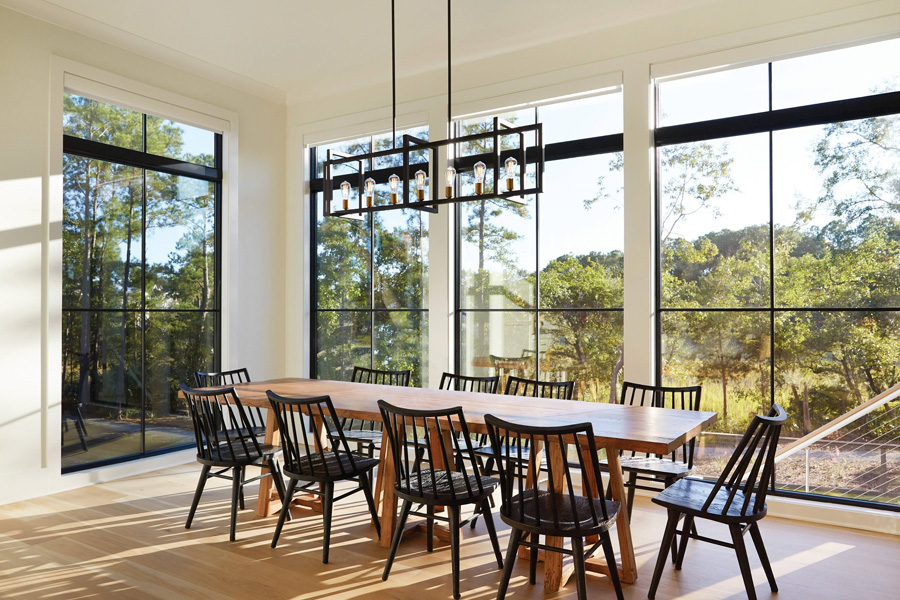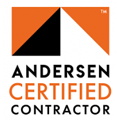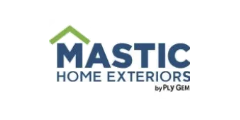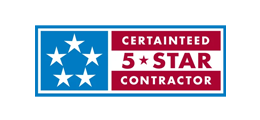Adding a home addition is a great way to boost your property value and make your living space more enjoyable. Before starting your project, it’s important to know the average cost and what affects the final price. You should consider the cost per square foot and set aside money for any unexpected costs. This simple guide will help you understand what you need to know about home addition costs.
Understanding Home Addition Costs
Home additions usually cost more than simple room renovations. This is because they require more complex construction work. You are essentially creating a new part of your home that fits well with the rest of the house. This affects everything from the foundation to the roof.
Many things besides square footage affect the cost of a home addition. These include permits needed for the project, labor costs for different skilled workers, the quality of materials you choose, and where you live. By understanding these costs, homeowners can make better choices during the project.
Average Cost Range in the United States
When estimating home addition costs, the average price per square foot is a good starting point. In the United States, you can expect to pay between $125 and $450 per square foot. However, remember that this is a general guideline and doesn’t factor in the specifics of your individual project.
Cost Per Square Foot Analysis
When you think about the cost per square foot, it’s important to know that some additions can be more expensive because they need special work. For example, kitchens and bathrooms usually cost more. This is because they need a lot of plumbing, electrical wiring, and specific fixtures.
The quality of the materials you choose also affects the total cost of a home addition. If you pick high-quality hardwood flooring, it will cost more compared to a less expensive laminate option. You should think about the cost and the value added when choosing materials for your project.
Another thing to keep in mind is that labor costs can change based on where you live. In places where living costs are high and there is a big demand for skilled laborers like electricians and plumbers, you will likely pay more for labor on your home addition.
Key Factors Influencing Home Addition Costs
The cost per square foot gives a rough idea of expenses, but many things affect the total cost of your home addition project. Knowing these factors helps you see how your money is spent. It also allows you to make smart choices to get the best value for your investment.
Every detail is important, from how complex the design is to the fees of the contractor you pick. Let’s take a closer look at the main factors that can influence your home addition budget.
Design and Complexity of the Addition
The total cost of your home addition is linked to how complicated the design is. Simple additions, like extending an outside wall to make a room bigger, need less work and materials. This is different from building an entirely new room or a second story, which takes more effort.
Features like high ceilings, custom windows, or detailed roofs make the project more complex and expensive. Think about whether these design choices fit your budget. Also, consider if their beauty is worth the higher cost.
Finding a balance between your goals and a practical design will help you create a home addition that meets your needs and keeps your budget reasonable.
Material Selection and Availability
Choosing good, strong materials for your home addition is important. You need to find a balance between quality and cost. The type of flooring, siding, roofing materials, and fixtures you pick can really affect how much the project will cost in the end.
Also, where you live can change prices. Getting special or custom materials might cost more and take longer to get. This can change when you finish your home addition and how much money you’ll spend.
It’s smart to work with your contractor. They can help you look at different material options that fit your style and budget. They often know what materials are easy to find and can suggest cheaper choices that still meet your quality needs.
Labor Costs and Contractor Fees
Labor is a large part of the costs for a home addition. To get good work, it is important to hire skilled laborers. These include electricians, plumbers, HVAC technicians, and carpenters. This helps ensure quality and that your project follows local building codes.
Contractor fees also affect the total cost. Good contractors take care of the project. They manage subcontractors, get permits, and make sure the job is done right. They usually charge either a percentage of the total cost or an hourly rate.
Getting detailed bids from different contractors can help you compare costs. This way, you can find the best option for your project. Be sure to ask about their experience, licensing, insurance, and any warranty they offer on their work.
Permitting and Regulatory Requirements
Before starting any home addition project, it is important to get the right permits from your local government. Building rules and laws can change depending on where you live. Permits make sure your construction project is safe and follows the zoning rules.
The fees for permits increase your project’s cost. These fees usually range from a few hundred to several thousand dollars. The amount depends on what you are doing and where you are located. Not getting the needed permits can result in fines and delays.
Your contractor will help you with the permitting process. Even so, it is a good idea to understand what your local rules are. They can tell you about any special regulations or inspections that might change your project’s time or costs.
Types of Home Additions and Their Costs
Home additions include many types of projects. Each project has costs that depend on what you need. If you want to add an extra bedroom, a big family room, or finish your basement, it’s important to know the average costs for each kind of addition. This will help you plan your budget properly.
This section will explain some common home additions and their usual costs. It will help you make smart choices based on what you need and how much money you have.
Room Additions vs. Full-Scale Additions
When you think about adding a space to your home, you can pick between a room addition or a full-scale addition. It is important to know the difference between the two. This knowledge helps you figure out what works best for your needs and budget.
Room additions mean adding just one room. It could be a bedroom, a bathroom, or a home office. These projects are usually smaller and simpler than full-scale additions. This makes them a more affordable choice for creating extra space.
Full-scale additions mean adding more rooms or even building a second story. They can also mean greatly expanding the area of your home. These projects cost more because they are more complex. They need more materials, more workers, and a lot of structural changes.
Second Story Additions
Adding a second story to your home is a smart way to increase your living space. You can do this without making your property larger. But, it’s important to know that this type of home addition can be complicated and costly.
When you add a second story, it increases the weight on your house. This usually means you need to make the foundation stronger. You may have to add support beams and check that the rest of the house can hold the extra weight. These changes can drive up the cost of the second-story addition.
Also, working at a higher level needs special equipment and safety steps. This can raise labor costs. Even though a second-story addition is a big investment, it gives you more living space and can greatly improve your property value.
Garage Conversions
Converting a garage into a living area is a common home improvement choice. It adds valuable square footage without the need for a new addition.
When you convert a garage, you usually need to insulate the walls and ceiling. You might also require electrical wiring, heating, and cooling systems. Finally, you will finish the space with flooring, drywall, and paint. The total cost will depend on what your garage looks like now and how much you want to change.
Turning a garage into a useful living space, like a home office, playroom, or guest suite, improves how your home works and increases its value.
Sunrooms and Conservatories
Sunrooms and conservatories are lovely ways to enjoy the outdoors all year while adding more space to your home. However, the costs for these can change based on the type, materials, and the work needed to set them up.
Sunrooms are usually three-season rooms with large windows. This lets in a lot of natural light and gives a nice view of the outside. They protect you from harsh weather, making them popular for people who want a bright and open space for relaxation or hosting friends.
Conservatories are fancier and made to keep the temperature and humidity just right. This means you can enjoy them all year long. They often have more complex glass designs and climate control features, and they might include beautiful water features. Because of this, conservatories can be more expensive. Both sunrooms and conservatories can increase your property value and provide unique living spaces, but sunrooms are usually a better choice if you want to save some money.
Deck and Outdoor Living Spaces
Decks and outdoor living spaces are becoming more popular for home renovations. They let homeowners enjoy the outdoors and the beauty of their property. The cost of these projects can vary a lot. It depends on the size, materials, and features you pick.
A simple pressure-treated wood deck is the cheapest choice. But if you want composite decking, detailed designs, or extras like outdoor kitchens or fire pits, it will cost more.
Think about your budget and how you want to use the space when planning your deck or outdoor area. Talking to a good contractor can help you understand the costs. They can also help you create a space that fits your needs and budget.
Planning Your Home Addition Project
Proper planning is very important for a successful home addition project. You need to think carefully about your needs, budget, and any challenges that might come up during construction. A clear plan will help guide you through every step and allow you to make good choices.
By setting a realistic budget and bringing together the right team of experts, careful planning can reduce the chance of costly issues. This way, your home addition will meet your hopes and dreams.
The Importance of Detailed Planning
Detailed planning is very important when you want to add on to your home. First, you need to decide what your project will include. Then, think about the features you want and set real expectations for how long it will take and how much it will cost.
A good plan means getting accurate quotes from contractors. You should also make a budget that covers all of your costs and think ahead about issues like delays or unexpected problems with the structure.
Having a detailed plan gives you a clear path for your project. It helps reduce the chances of big surprises or going over budget. This way, everyone involved, from you to your contractor, stays informed and avoids any misunderstandings that could lead to extra costs.
Choosing the Right Contractor
Choosing the right general contractor is very important for your home addition project. You want to find someone who is skilled, has experience, and understands your ideas. Good communication is key, and they should have a history of delivering high-quality work.
To find a good contractor, ask friends, family, or neighbors for suggestions if they have done similar projects. It’s also a good idea to check potential contractors online. Make sure they have the right licenses and insurance. Ask for a detailed estimate that explains the work they will do and the expected costs.
Keep in mind that the lowest bid may not be the best choice. Look for a contractor who shows professionalism, focuses on quality, and understands what your project needs. Finding the right contractor will help make the process easier and ensure that your home addition is done right.
Budgeting for Unexpected Costs
No matter how careful you are with your planning, unexpected costs can come up during a home addition project. It is a good idea to add a contingency fund to your budget. This helps you cover unexpected expenses without slowing down your project or affecting its quality.
Unforeseen costs can happen if you find hidden problems during demolition, run into unexpected site issues, or face higher costs for labor or materials. Weather delays or issues with permits can also change your budget.
Try to save a contingency fund of 10% to 20% of your total project budget. This extra money helps you stay flexible and relaxed. It makes sure you can handle unexpected costs and keep the quality of your home addition high.
Maximizing Your Investment
A home addition is a big financial project. However, it can be a good investment. It not only adds more living space but also can make your property value higher. A good home addition can improve energy efficiency too. It can also make your quality of life better.
If you think about the long-term value and add features that attract buyers, you can get great returns on your home addition. This makes it a smart financial choice that you can enjoy for many years.
Enhancing Property Value Through Additions
A good home addition can really raise the value of your property. When you think about adding space to your home, it’s important to focus on features that buyers like. You should also check what is popular in real estate right now for your area.
Some great ideas include adding a bedroom and bathroom, finishing your basement, or making a useful home office. These options appeal to buyers who want more space and better functionality.
Talk to a local real estate agent. They can help you understand what features are most wanted in your neighborhood. This can help you make smart choices about your home addition, so you can get the best resale value for your property.
Energy-Efficient Materials and Designs
Adding energy-efficient materials and designs to your home addition is good for the environment. It can also save you money over time and increase your property value.
Using energy-efficient windows and proper insulation helps keep your home at a comfortable temperature. This reduces how much energy you use and lowers your monthly bills. You might also think about adding energy-efficient appliances and fixtures to improve your home’s energy use even more.
Sustainable features are appealing to home buyers. This makes your home more attractive to those looking to buy. It can also help raise the resale value of your home. When you choose energy efficiency, you are making a smart choice for the planet and your finances.
Trends and Features That Appeal to Buyers
Staying updated on the latest trends in home design can really help your home addition attract buyers. Many people today like open floor plans, lots of natural light, and smooth transitions between indoor and outdoor areas. These are popular design features in the real estate market.
Think about adding things like a large kitchen island, a nice walk-in shower, or a warm fireplace. These features can make your home feel more appealing and create a welcoming space for potential buyers.
Keep in mind that a home addition is a great chance to improve your living space. It can also help you create a home that shows your style and meets your family’s changing needs.
Home Addition Cost
Whether you choose a room addition, a second-story extension, or an outdoor living area, careful planning is key. Choosing the right contractor is also very important. By using energy-efficient designs and nice features, you can increase your property value and enjoy your home more. With careful planning and focus on costs, your home addition project can be a great investment for your property’s future.




















